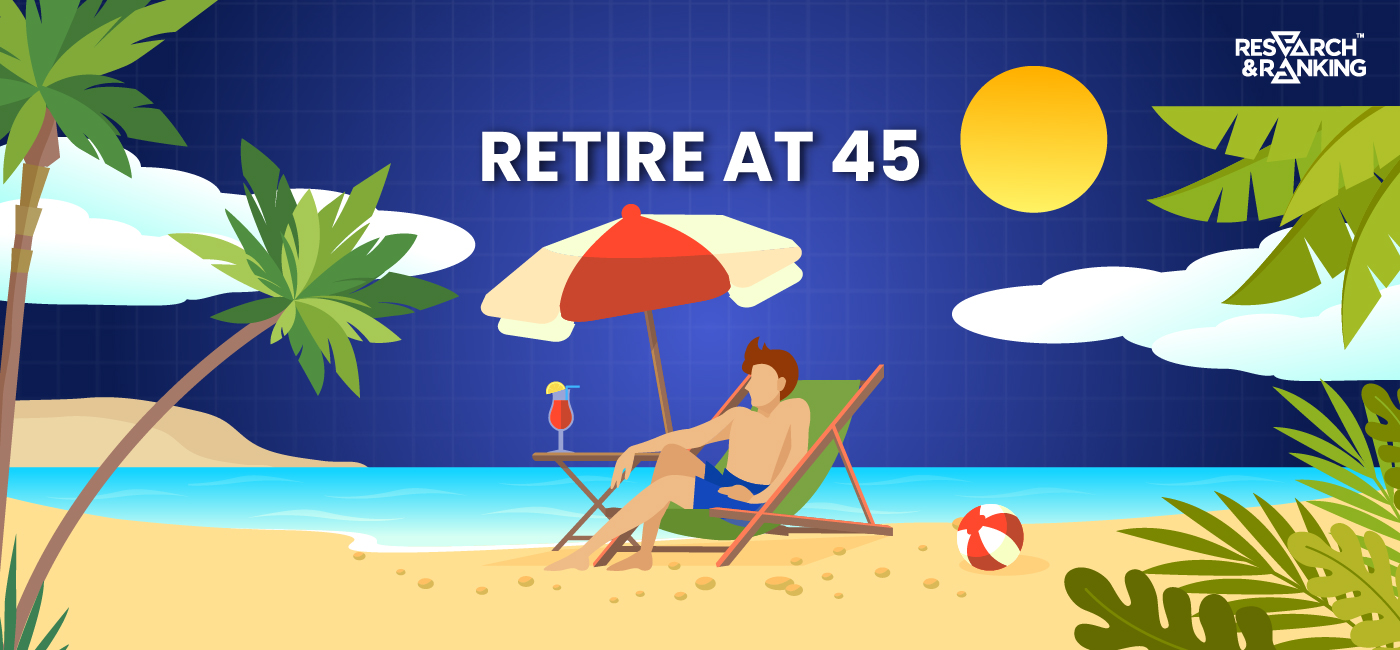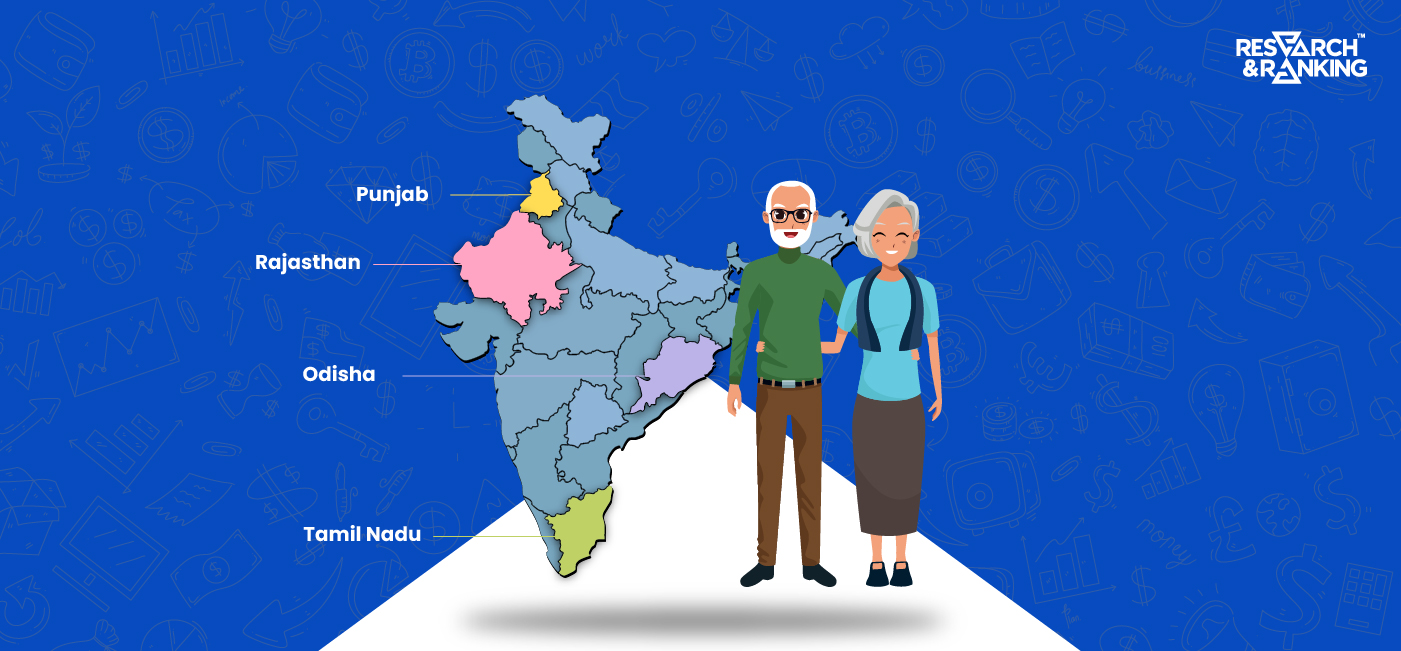Retirement is one of the biggest milestones in an individual’s life. But unlike other things, we never talk about the age at which one should retire. Most of us don’t know the ideal retirement age in India.
But first, we must understand what retirement exactly means. It is the age when a person stops working and becomes eligible for a pension or other benefits without working for money or, in other words, retirement benefits. Retirement age varies depending on the type of employment, sector, and country. In this blog, we will explore the retirement age in India for different categories of workers and the factors that influence it.
Retirement Age In India
Unlike some countries with a uniform retirement age for all citizens, India has different retirement ages for different types of workers. The retirement age in India depends on the type of employment, sector, and state. Generally, the legal retirement age in India ranges from 55 to 65 years, with some exceptions.
New Retirement Age In India
In recent years, the retirement age in India has been changed for certain categories of employed professionals. The central government has increased the retirement age of some of its employees to address the shortage of skilled manpower and to retain experienced professionals. For example, in 2019, the retirement age of doctors working under the central health services was increased from 62 to 65 years. Similarly, in 2020, the retirement age of central armed police forces personnel was increased from 60 to 65 years.
High Court Judge Retirement Age in India
The retirement age of high court judges in India is determined by the Constitution of India. According to Article 217 of the Constitution, the retirement age of high court judges is 62 years. However, a high court judge can be appointed as a Supreme Court judge, in which case the retirement age is 65 years, per Article 124 of the Constitution.
Retirement age in India for Central Government employees
The Central Civil Services (Pension) Rules, 1972, fixed the retirement age in India for central government employees. According to these rules, the retirement age of central government employees is 60 years unless otherwise specified. However, there are some exceptions to this rule, such as:
- The retirement age for professors, principals, and directors of academic institutions under the central government is 65 years, per the University Grants Commission Regulations, 2018.
- The retirement age for scientists and technical officers of the Defence Research and Development Organisation (DRDO) is 60 years, with an option to extend up to 64 years, as per the DRDO Recruitment Rules for Scientist B (Direct Recruitment).
- The retirement age for chairpersons and members of statutory and regulatory bodies under the central government is 70 years, per the Department of Personnel and Training Guidelines on Tenure, Terms, and Conditions of Appointment of Chairpersons/Members of Regulatory Bodies and Tribunals.
Employees’ retirement age in India for the private sector
The retirement age in India for private sector employees is not fixed by law. Still, it depends on the contract of employment, the policies of the employer, and the mutual agreement between the employer and the employee. Generally, private sector employees’ retirement age in India is 58 or 60 years. Still, it can vary from 55 to 65 years, depending on the industry, the nature of work, and the performance of the employee.
Army Retirement Age in India
The retirement age in India for army personnel depends on the rank, the service, and the option of the individual. The retirement age in India for army personnel ranges from 35 to 60 years, with some exceptions. For example, the retirement age for:
- Sepoys, naiks, havildars, and equivalent ranks is 35 years or 17 years of service, whichever is earlier, as per the Indian Army website.
- Junior commissioned officers (JCOs) and equivalent ranks are 48 years or 28 years of service, whichever is earlier, as per the Indian Army website.
- Commissioned officers (COs) and equivalent ranks are 54 years or 30 years of service, whichever is earlier, per the Indian Army website.
- Army Medical Corps officers’ retirement age is 60 or 31 years of service, whichever is earlier, per the Indian Army website.
- Army dental corps officers’ retirement age is 60 or 30 years of service, whichever is earlier, per the Indian Army website.
Police Retirement Age in India
The retirement age in India for police personnel depends on the state, the rank, and the service. The retirement age in India for police personnel ranges from 55 to 62 years, with some exceptions. For example, the retirement age for:
- Constables, head constables, assistant sub-inspectors, sub-inspectors, and inspectors are 55 or 60 years old, depending on the state, as per the Police Reforms Bill Summary by PRS Legislative Research.
- Deputy superintendents of police, assistant commissioners of police, and equivalent ranks are 58 or 60 years, depending on the state, as per the Police Reforms Bill Summary by PRS Legislative Research.
- Superintendents of police, deputy commissioners of police, and equivalent ranks is 60 years, as per the Police Reforms Bill Summary by PRS Legislative Research.
- Additional directors general of police, directors general of police, and equivalent ranks is 62 years, per the Police Reforms Bill Summary by PRS Legislative Research.
Will the retirement age be increased to 62?
There have been some speculations and rumors that the central government may increase the retirement age of central government employees from 60 to 62 years. However, there has been no official confirmation or announcement from the government. The government has clarified that there is no proposal to change the retirement age of central government employees. Therefore, the retirement age of central government employees remains 60 years unless otherwise specified.
Conclusion
Retirement age in India is a complex and dynamic topic, as it varies depending on the type of employment, sector, and state. Retirement age in India is influenced by various factors, such as the availability of skilled manpower, the demand for experienced professionals, the financial implications, and the social and economic conditions. Retirement age in India may change in the future, as the government and employers may revise their policies and practices to suit the changing needs and expectations of the workforce and society.
Know more about: MEDI ASSIST HEALTHCARE IPO
What is the retirement age in India?
The retirement age in India varies depending on the type of employment, sector, and state. Generally, it ranges from 55 to 65 years, with some exceptions. For more information, please read our blog on Retirement Age In India.
What is the right age for retirement?
The right age for retirement depends on various factors, such as your lifestyle goals, financial capability, health condition, and personal preference. Some people may want to retire early, while others may want to work longer. However, there are some general guidelines that can help you decide the right age for retirement, such as planning based on your expected life span, considering the impact of inflation, taxes, and health care costs, assessing your current and future sources of income and expenses, and evaluating your personal and professional satisfaction and goals. For more tips, please read our blog on How to Choose the Right Age for Retirement.
Can I retire at 62 if I am 58?
Yes, you can retire at 62 if you are 58, provided that you have enough savings and income to support yourself and your dependents after retirement. However, there are some pros and cons of retiring at 62 that you should be aware of. Some of the pros are that you can enjoy more free time and flexibility, avoid the stress and pressure of work, and take advantage of the early retirement benefits offered by some employers. Some of the cons are that you may receive lower Social Security benefits, face higher health care costs, and outlive your savings. Therefore, before you decide to retire at 62, you should weigh the pros and cons carefully and consult a financial planner or advisor. For more details, please read our blog on The Pros and Cons of Retiring at 62.















